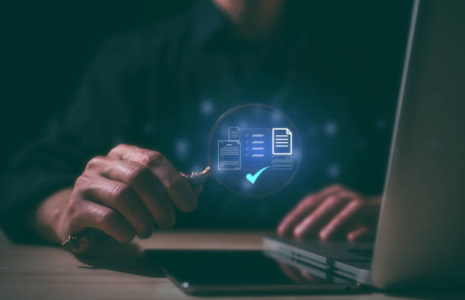The Pros and Cons of Remote Employee Monitoring
Remote work is becoming increasingly popular in today’s digital age. Organizations are turning to remote employee monitoring to ensure productivity and accountability as remote work becomes more popular. While remote employee monitoring has many advantages, it also raises privacy and trust concerns.
Here, we will explore the pros and cons of remote employee monitoring and discuss strategies to strike the right balance between productivity and privacy in a remote work environment.
Introduction to Remote Employee Monitoring
Remote employee monitoring involves the use of software and tools to track and keep an eye on an employee’s activity, such as their internet use, time spent working on tasks, and overall productivity. It gives employers information about how well their employees are performing, assists in identifying areas for development, and makes sure that remote teams are operating effectively.
Pros of Remote Employee Monitoring
There are several benefits to remote employee monitoring that can help make the environment more effective and productive. Here are some of the key benefits –
Increased productivity
Businesses can spot bottlenecks, inefficiencies, and areas for improvement by keeping an eye on employee behavior and performance metrics. This allows for targeted coaching and support to enhance productivity and drive better results.
Enhanced communication and collaboration
Tools for remote monitoring frequently include functions like screen sharing, instant messaging, and video conferencing. These tools help remote teams communicate effectively and clearly, fostering seamless collaboration and task completion on schedule.
Accountability and performance tracking
Managers can track employee performance through remote monitoring, establish goals, and offer assistance with personal growth. Managers can improve accountability and performance by giving timely feedback and coaching to employees by having visibility into their progress.
Cons of Remote Employee Monitoring
While remote employee monitoring offers benefits, it also raises concerns that need to be addressed to maintain employee trust and morale. Here are some of the potential drawbacks –
Privacy concerns
Continuous monitoring can infringe on employees’ privacy and create a sense of being constantly watched. Employees may feel uncomfortable knowing that their every action is being tracked, leading to increased stress and decreased job satisfaction.
Trust and autonomy
Remote work thrives on trust and autonomy. Excessive monitoring can undermine these essential elements, making employees feel micromanaged and eroding their sense of ownership and independence in their work.
Negative psychological impact
Continuous monitoring can contribute to heightened stress, anxiety, and a feeling of being constantly under scrutiny. This can have a negative impact on employee mental health and well-being, leading to decreased motivation and burnout.
Balancing Productivity and Privacy
To strike the right balance between productivity and privacy in remote employee monitoring, organizations should consider the following strategies –
Transparent communication
Establish open and honest communication about the purpose and extent of remote monitoring. Clearly communicate the reasons behind monitoring practices and address any concerns employees may have. Transparency helps build trust and ensures that employees understand the benefits and limitations of monitoring.
Clear policies and guidelines
Develop well-defined policies that outline the purpose, scope, and limitations of remote monitoring. Clearly communicate these policies to all employees, ensuring they understand their rights and responsibilities. Having clear guidelines in place helps set expectations and provides employees with a sense of security and understanding.
Employee Involvement and Feedback
Involve employees in shaping remote monitoring policies and practices. Seek their feedback and input to address concerns and make improvements. By involving employees in the decision-making process, organizations demonstrate a commitment to fairness and collaboration.
Effective Implementation of Remote Monitoring Tools
Implementing remote monitoring tools requires careful planning and consideration. Here are some steps to ensure effective implementation –
Selecting the right tools
Research and select monitoring tools that align with your organization’s specific needs. Consider factors such as data security, user-friendliness, and scalability. Choose tools that provide the necessary features while respecting employee privacy.
Training and onboarding
Provide comprehensive training and onboarding sessions for employees. Ensure they understand how to use the monitoring tools effectively and address any concerns or questions they may have. Clear communication is crucial to gaining employee buy-in and cooperation.
Regular evaluation and adjustments
Continuously evaluate the effectiveness of the remote monitoring system. Seek feedback from both employees and managers to identify areas for improvement. Adjust the monitoring practices, policies, and tool settings as necessary to strike the right balance between monitoring productivity and respecting privacy.
Impact on Employee Morale
Remote monitoring can have an impact on employee morale, and it’s essential to address this aspect. Consider the following strategies to maintain a positive work environment –
Recognition and feedback
Regularly acknowledge employee achievements and provide constructive feedback. Recognize their hard work and efforts to motivate and engage remote workers. Positive reinforcement plays a significant role in boosting morale and fostering a sense of appreciation.
Fostering trust and autonomy
Remote monitoring shouldn’t undermine trust or employee autonomy. Encourage open and transparent communication to build trust between management and employees. Empower employees by involving them in decision-making processes and giving them autonomy over their work tasks. A sense of trust and autonomy can counterbalance any negative effects of monitoring.
Support and well-being initiatives
Prioritize employee well-being by implementing support programs and initiatives. Offer mental health resources, promote work-life balance, and encourage employees to take breaks and practice self-care. Supporting employees’ overall well-being can positively influence their morale and job satisfaction.
Maintaining Work-Life Balance in a Remote Work Environment
Remote work can blur the boundaries between work and personal life. To maintain a healthy work-life balance while being monitored remotely, consider the following tips –
Establishing boundaries
Set clear boundaries by defining dedicated working hours and separating your workspace from your living space. Clearly communicate these boundaries with your colleagues and family members to minimize interruptions and distractions.
Self-care and breaks
Prioritize self-care activities and take regular breaks throughout the workday. Engage in physical exercise, practice mindfulness, or indulge in hobbies to recharge your energy. Remember that taking care of your well-being is essential for sustainable productivity.
Time management techniques
Use effective time management techniques to prioritize tasks and maintain focus. Create a schedule or to-do list, break larger projects into smaller, manageable tasks, and utilize productivity tools and techniques such as the Pomodoro Technique. Efficient time management can help you accomplish your work goals while leaving ample time for personal activities.
Conclusion!
In conclusion, Flowace remote employee monitoring comes with both advantages and disadvantages. It can improve productivity, enhance communication, and promote accountability. However, it also raises concerns about privacy, trust, and employee autonomy. Striking the right balance between monitoring and employee well-being is crucial.
By implementing remote monitoring tools effectively, fostering trust, and supporting employees’ work-life balance, organizations can mitigate the potential negative impact of monitoring on employee morale.
At Flowace, we understand the importance of maintaining this delicate balance. Our employee monitoring tool is designed to empower organizations with insights into employee performance while respecting privacy and promoting a positive work culture. With features that foster transparent communication, clear policies, and employee involvement, Flowace helps organizations navigate the challenges of remote employee monitoring effectively.
Remember, remote employee monitoring should never compromise employee well-being or erode trust. Flowace is here to support organizations in achieving their goals while prioritizing the privacy and happiness of their remote teams.
Discover the power of Flowace today and experience a harmonious blend of productivity and employee satisfaction in your remote work environment.



Leave a Reply
You must be logged in to post a comment.